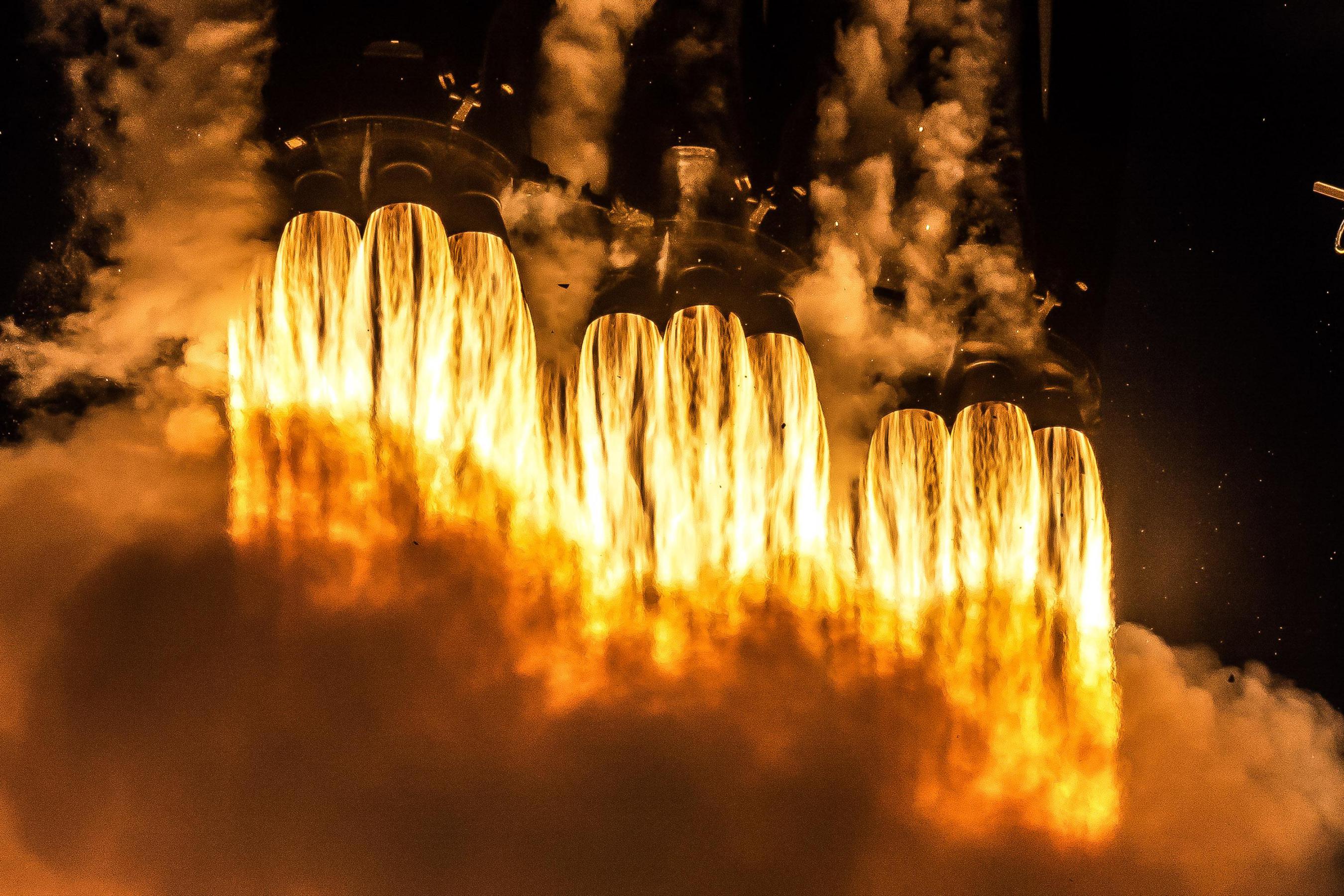

News
SpaceX waits in the wings as NASA risks maiming Jupiter probe to pinch pennies
SpaceX and its Falcon Heavy rocket continue to wait in the wings as NASA risks maiming its ‘Europa Clipper’ Jupiter probe by pinching the wrong pennies.
For the second time, NASA has performed “continuation/termination reviews” of three of the Europa Clipper spacecraft’s scientific instruments after budget overruns on the order of no more than a few tens of millions of dollars. Thankfully, no instruments were canceled, unlike the “ICEMAG” magnetometer that was functionally killed last year. Still, a NASA program scientist casually noted that the space agency would tolerate launching without one of two cameras and would offer no more funding to a mass spectrometer instrument (MASPEX), raising the risk of instrument failure during the challenging mission.
For any scientific spacecraft or rover, the instruments carried along are effectively the entire reason for their existence: if those instruments are faulty (or even removed before launch), the mission is effectively rendered pointless. Further, due to the sheer complexity and challenges posed by the act of getting to the destination and surviving after arrival, the actual instruments most scientific spacecraft carry represent a tiny fraction of the overall mission cost and mass. It’s not easy to readily imagine a better way to signal inept program management than by singularly focusing on that tiny, lifeblood-esque portion of a spacecraft’s budget. Undeterred, that is exactly what NASA appears to be doing with Europa Clipper – penny-wise, perhaps, but undoubtedly pound-foolish.
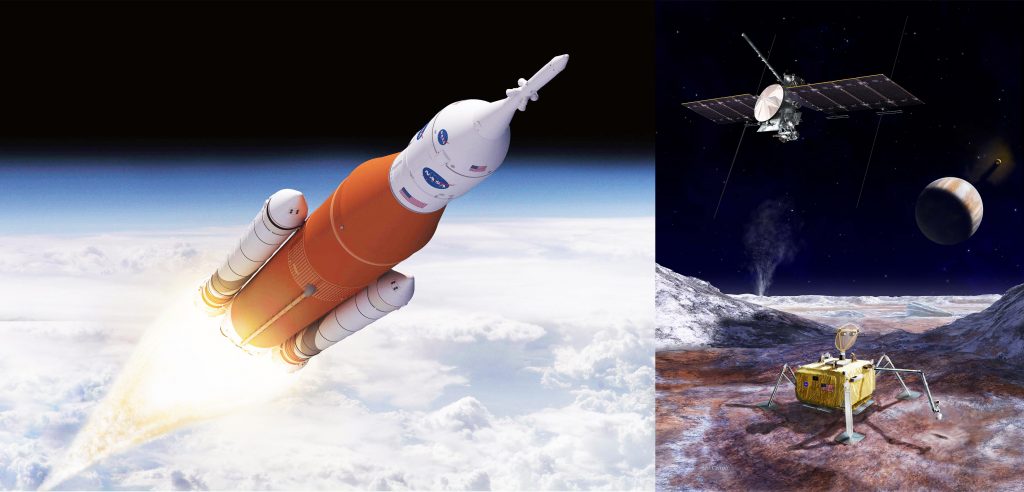
It’s not always true that only a small portion of an exploratory spacecraft’s budget is spent on scientific instruments but it absolutely is when it comes to Europa Clipper. Originally hoped to cost as little as $2 billion in 2013, Europa Clipper’s budget allocation has ballooned to $4.5 billion over the life of the program. Of that $4.5 billion, as little as $110M was dedicated to nine scientific instruments assigned to the spacecraft – a ratio of ~41:1. Even if instrument cost ballooned by 100% to ~$220 million, it would still be a measly 20:1. The space environment around Jupiter is admittedly one of the most challenging in the Solar System, warranting some imbalance, but either ratio is still exceptionally bad as far as most exploratory missions go.
Designed to create detailed maps of Europa’s theorized water oceans, ICEMAG, for example, jumped from a $30 million cost estimate to $45 million before NASA abruptly killed it. A Clipper planetary scientist called ICEMAG “a critical instrument that’s been central to Europa science forever”. MASPEX, meanwhile, is a mass spectrometer that will be used to analyze possible chemicals captured by flying through Europa’s transient atmosphere (or, even better yet, plumes from vast ocean geysers). In other words, the instrument most likely to be hobbled next by NASA is also the only instrument on Europa Clipper capable of potentially detecting signs of life by directly sampling material ejected by Europa’s plumes.
Even just with ICEMAG removed, the value proposition of a $4.5 billion mission to an ocean moon of Jupiter becomes much hazier. With ICEMAG removed and MASPEX at risk of being thrown to the wolves, Europa Clipper’s purpose becomes even weaker. Of course, seven valuable instruments remain – some of which partially overlap with MASPEX’ goals – and MASPEX could still technically make it to the finish line in its original handicap-free state, but the tides are definitely not moving in an encouraging direction.
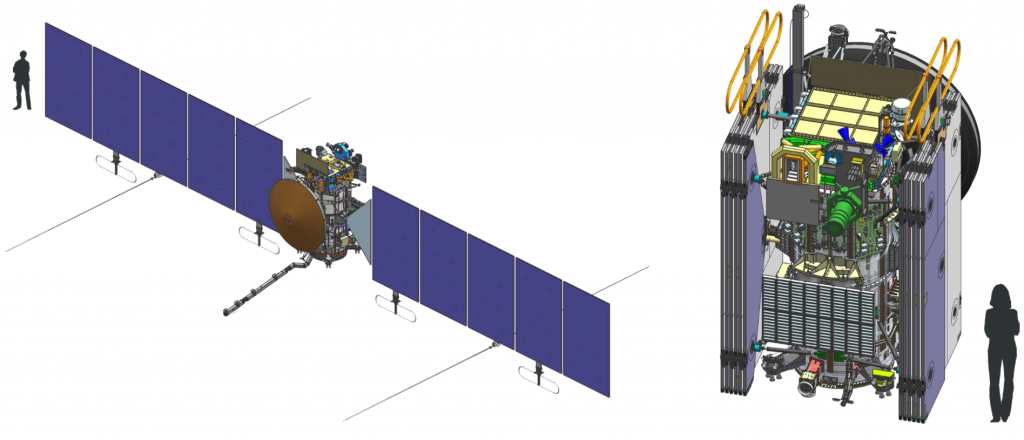
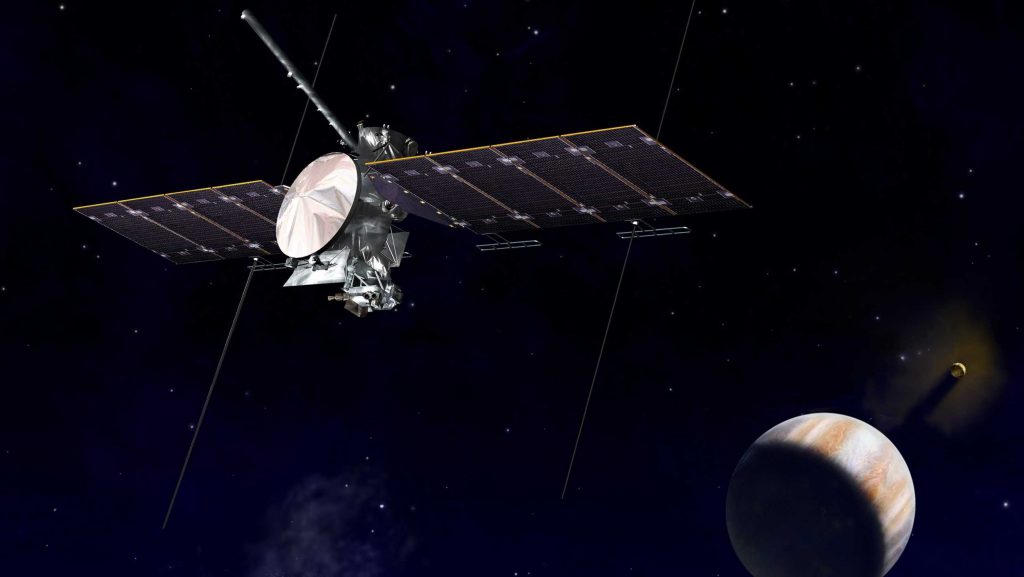
The worst part is that excluding the extraordinarily expensive spacecraft that will host instruments worth ~3-5% its cost, Congress has been dead-set on forcing Europa Clipper to launch on NASA’s chronically-delayed, over-budget Space Launch System (SLS) rocket. SLS has yet to launch once despite more than a decade of development and almost $30 billion spent on the rocket alone, and it would take a miracle for an SLS rocket to be ready to launch Clipper before 2025 or 2026. Europa Clipper is working towards a launch no earlier than 2024, meaning that the spacecraft would have to be stored indefinitely at a cost of at least $125 million per year.
Intrepid readers may note that the cost of simply waiting a single year for SLS to be ready for launch is higher than the cost of all of Europa Clipper’s scientific instruments at their original $110 million budget. The actual cost to NASA for a single SLS launch is expected to $1.5 billion at the absolute minimum, while $2-2.5 billion is far more reasonable. With a little effort and some moderate cruise stage tweaks, Ars Technica has already reported that an expendable SpaceX Falcon Heavy rocket augmented with an off-the-shelf kick stage could send Europa Clipper to Jupiter in 5-6 years, compared to ~3 with SLS.
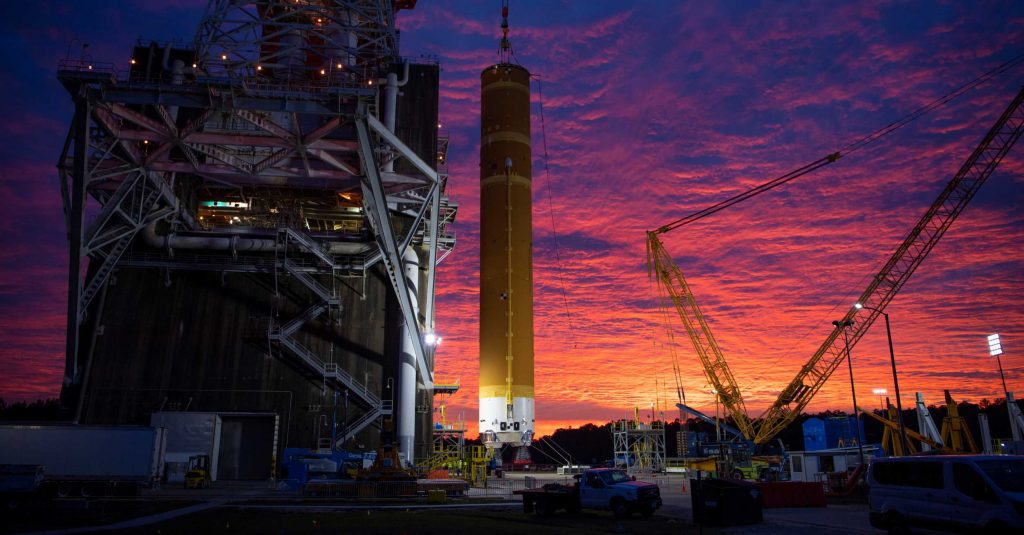
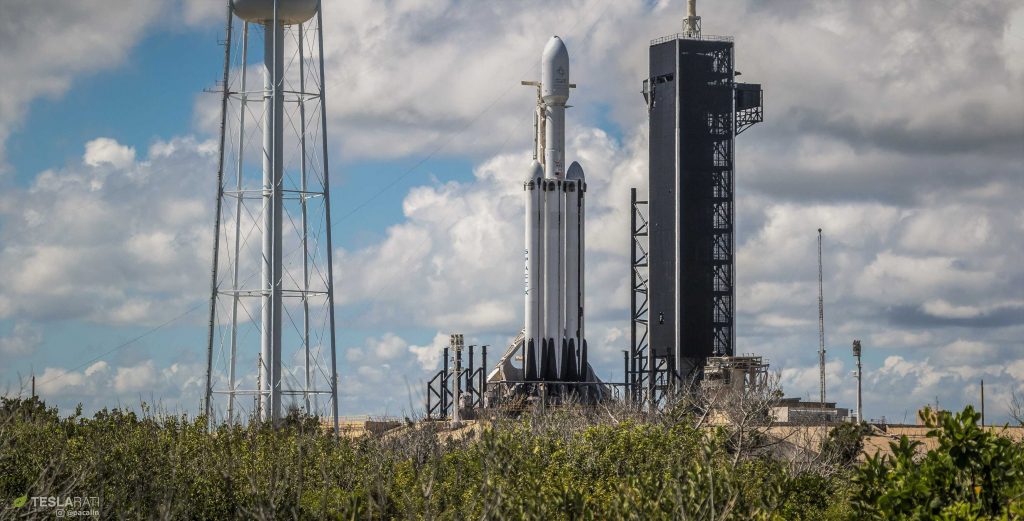
Ironically, that means that if Falcon Heavy was ready to launch Europa Clipper when the spacecraft is expected to be ready in 2024, it would actually arrive at the same time (or close) if it launched on SLS – once a minimum two-year launch vehicle delay is accounted for. A Falcon Heavy would also save NASA at least $1-2 billion, while it would directly save the Europa Clipper program the ~$250 million it would otherwise need to spend to store the spacecraft while waiting years for an SLS rocket. That $250 million alone – an inevitable add-on cost if SLS is chosen – could easily double the budget of every single Europa Clipper science instrument, adding plenty of breathing room, reinstating ICEMAG, and likely improving the science they output – data-gathering quite literally being the whole purpose of the mission.
Of course, the odds that NASA actually steps out from under the political shadow of SLS and stops playing penny wise and pound foolish with the extraordinarily expensive science missions it shepherds is unlikely. But still, the possibility (and hope) remains. Most recently, a very slight change in the wording of a proposed law (bill) could give the Europa Clipper program the legal wiggle room it needs to sidestep Congress’ desire to force it to launch on SLS. Of course, the senators and representatives with parochial attachment to the rocket will continue to fight tooth and nail to legally force it upon NASA at every possible turn, but there is now at least a chance of a sane outcome.
Check out Teslarati’s Marketplace! We offer Tesla accessories, including for the Tesla Cybertruck and Tesla Model 3.
Elon Musk
Tesla reveals it is using AI to make factories more sustainable: here’s how
Tesla is using AI in its Gigafactory Nevada factory to improve HVAC efficiency.

Tesla has revealed in its Extended Impact Report for 2024 that it is using Artificial Intelligence (AI) to enable its factories to be more sustainable. One example it used was its achievement of managing “the majority of the HVAC infrastructure at Gigafactory Nevada is now AI-controlled” last year.
In a commitment to becoming more efficient and making its production as eco-friendly as possible, Tesla has been working for years to find solutions to reduce energy consumption in its factories.
For example, in 2023, Tesla implemented optimization controls in the plastics and paint shops located at Gigafactory Texas, which increased the efficiency of natural gas consumption. Tesla plans to phase out natural gas use across its factories eventually, but for now, it prioritizes work to reduce emissions from that energy source specifically.
It also uses Hygrometric Control Logic for Air Handling Units at Giafactory Berlin, resulting in 17,000 MWh in energy savings each year. At Gigafactory Nevada, Tesla saves 9.5 GWh of energy through the use of N-Methylpyrrolidone refineries when extracting critical raw material.
Perhaps the most interesting way Tesla is conserving energy is through the use of AI at Gigafactory Nevada, as it describes its use of AI to reduce energy demand:
“In 2023, AI Control for HVAC was expanded from Nevada and Texas to now include our Berlin-Brandenburg and Fremont factories. AI Control policy enables HVAC systems within each factory to work together to process sensor data, model factory dynamics, and apply control actions that safely minimize the energy required to support production. In 2024, this system achieved two milestones: the majority of HVAC infrastructure at Gigafactory Nevada is now AI-controlled, reducing fan and thermal energy demand; and the AI algorithm was extended to manage entire chiller plants, creating a closed-loop control system that optimizes both chilled water consumption and the energy required for its generation, all while maintaining factory conditions.”
Tesla utilizes AI Control “primarily on systems that heat or cool critical factory production spaces and equipment.” AI Control communicates with the preexisting standard control logic of each system, and any issues can be resolved by quickly reverting back to standard control. There were none in 2024.
Tesla says that it is utilizing AI to drive impact at its factories, and it has proven to be a valuable tool in reducing energy consumption at one of its facilities.
Elon Musk
Tesla analysts believe Musk and Trump feud will pass
Tesla CEO Elon Musk and U.S. President Donald Trump’s feud shall pass, several bulls say.

Tesla analysts are breaking down the current feud between CEO Elon Musk and U.S. President Donald Trump, as the two continue to disagree on the “Big Beautiful Bill” and its impact on the country’s national debt.
Musk, who headed the Department of Government Efficiency (DOGE) under the Trump Administration, left his post in May. Soon thereafter, he and President Trump entered a very public and verbal disagreement, where things turned sour. They reconciled to an extent, and things seemed to be in the past.
However, the second disagreement between the two started on Monday, as Musk continued to push back on the “Big Beautiful Bill” that the Trump administration is attempting to sign into law. It would, by Musk’s estimation, increase spending and reverse the work DOGE did to trim the deficit.
Every member of Congress who campaigned on reducing government spending and then immediately voted for the biggest debt increase in history should hang their head in shame!
And they will lose their primary next year if it is the last thing I do on this Earth.
— Elon Musk (@elonmusk) June 30, 2025
President Trump has hinted that DOGE could be “the monster” that “eats Elon,” threatening to end the subsidies that SpaceX and Tesla receive. Musk has not been opposed to ending government subsidies for companies, including his own, as long as they are all abolished.
How Tesla could benefit from the ‘Big Beautiful Bill’ that axes EV subsidies
Despite this contentious back-and-forth between the two, analysts are sharing their opinions now, and a few of the more bullish Tesla observers are convinced that this feud will pass, Trump and Musk will resolve their differences as they have before, and things will return to normal.
ARK Invest’s Cathie Wood said this morning that the feud between Musk and Trump is another example of “this too shall pass:”
BREAKING: CATHIE WOOD SAYS — ELON AND TRUMP FEUD “WILL PASS” 👀 $TSLA
She remains bullish ! pic.twitter.com/w5rW2gfCkx
— TheSonOfWalkley (@TheSonOfWalkley) July 1, 2025
Additionally, Wedbush’s Dan Ives, in a note to investors this morning, said that the situation “will settle:”
“We believe this situation will settle and at the end of the day Musk needs Trump and Trump needs Musk given the AI Arms Race going on between the US and China. The jabs between Musk and Trump will continue as the Budget rolls through Congress but Tesla investors want Musk to focus on driving Tesla and stop this political angle…which has turned into a life of its own in a roller coaster ride since the November elections.”
Tesla shares are down about 5 percent at 3:10 p.m. on the East Coast.
Elon Musk
Tesla scrambles after Musk sidekick exit, CEO takes over sales
Tesla CEO Elon Musk is reportedly overseeing sales in North America and Europe, Bloomberg reports.

Tesla scrambled its executives around following the exit of CEO Elon Musk’s sidekick last week, Omead Afshar. Afshar was relieved of his duties as Head of Sales for both North America and Europe.
Bloomberg is reporting that Musk is now overseeing both regions for sales, according to sources familiar with the matter. Afshar left the company last week, likely due to slow sales in both markets, ending a seven-year term with the electric automaker.
Tesla’s Omead Afshar, known as Elon Musk’s right-hand man, leaves company: reports
Afshar was promoted to the role late last year as Musk was becoming more involved in the road to the White House with President Donald Trump.
Afshar, whose LinkedIn account stated he was working within the “Office of the CEO,” was known as Musk’s right-hand man for years.
Additionally, Tom Zhu, currently the Senior Vice President of Automotive at Tesla, will oversee sales in Asia, according to the report.
It is a scramble by Tesla to get the company’s proven executives over the pain points the automaker has found halfway through the year. Sales are looking to be close to the 1.8 million vehicles the company delivered in both of the past two years.
Tesla is pivoting to pay more attention to the struggling automotive sales that it has felt over the past six months. Although it is still performing well and is the best-selling EV maker by a long way, it is struggling to find growth despite redesigning its vehicles and launching new tech and improvements within them.
The company is also looking to focus more on its deployment of autonomous tech, especially as it recently launched its Robotaxi platform in Austin just over a week ago.
However, while this is the long-term catalyst for Tesla, sales still need some work, and it appears the company’s strategy is to put its biggest guns on its biggest problems.
-

 Elon Musk1 day ago
Elon Musk1 day agoTesla investors will be shocked by Jim Cramer’s latest assessment
-

 News6 days ago
News6 days agoTesla Robotaxi’s biggest challenge seems to be this one thing
-

 News2 weeks ago
News2 weeks agoTesla’s Grok integration will be more realistic with this cool feature
-

 Elon Musk2 weeks ago
Elon Musk2 weeks agoElon Musk slams Bloomberg’s shocking xAI cash burn claims
-

 News2 weeks ago
News2 weeks agoTesla China roars back with highest vehicle registrations this Q2 so far
-

 News2 weeks ago
News2 weeks agoTexas lawmakers urge Tesla to delay Austin robotaxi launch to September
-

 News2 weeks ago
News2 weeks agoTesla dominates Cars.com’s Made in America Index with clean sweep
-

 Elon Musk1 week ago
Elon Musk1 week agoFirst Look at Tesla’s Robotaxi App: features, design, and more




















